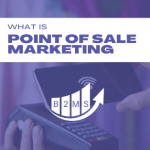What is Outbound Marketing
Outbound marketing is a process of sending your product or service information to a specific target audience in order to generate leads. It is important to note that outbound marketing is different from inbound marketing because it targets and reaches out to a specific audience, while inbound marketing attracts new customers by providing them with content related to their interests and needs.
Outbound marketing is therefore a push strategy to actively approach the target audience.
The five critical components of outbound marketing are:
- Vision
- Mission
- Strategy
- Content approach
- Channel
Differences between Inbound and Outbound Marketing
Inbound marketing is about attracting customers to your product or service by providing high-quality, relevant content. Unlike outbound marketing, inbound marketing involves “pulling” the potential customer. The potential customer finds the information provided on their own.
Simplified, outbound marketing aims to find the customer, while inbound focuses on being found by the customer.
Inbound marketing gained popularity as it appears more effective than traditional outbound marketing strategies.
Thus, online marketing methods also differ.
However, there is also overlap and undefined swim lanes of campaigns. Is a LinkedIn lead generation campaign inbound or outbound? Due to increasingly precise audience targeting, social media campaigns and Pay-Per-Click (PPC) are mostly classified as inbound. To some extent, both strategies also pursue the same inbound marketing goals and KPIs.
At the end both marketing tactics aim to push leads with marketing efforts from brand awareness further down the sales funnel until they convert to customers. Along the way email marketing and case studies will be presented regardless if the original source was incoming or outgoing.
Components of outbound marketing
Outbound marketing is a traditional form of marketing. Examples of outbound tactics are advertising messages such as TV commercials, mass e-mails, but also trade shows or cold calling. These tactics often have a high waste and require a lot of repetition to attract customers. This can have further negative consequences, as potential customers can become annoyed by the advertising. Overall, there are a variety of types of digital advertising, and it is important to choose the right formats and channels for your target audience.
However, outbound marketing can also be used in a very targeted way, ensuring an increased reach and achieving short- and long-term success.
Inbound vs Outbound Marketing
| Inbound Marketing | Outbound Marketing |
|
Content Marketing (e.g. blog posts, eBooks, videos, podcast, webinars) |
Classic advertising (TV, print, radio, Out-of-Home) |
|
SEO (e.g. technical SEO and keyword-optimization) | Press releases |
| Organic Social Media Marketing | Partner programs |
| Social Media Advertising | Sales & SDR Marketing |
| Pay-Per-Click Ads | Mass E-Mails |
|
Word-of-Mouth/ Recommendations | Conferences, Trade Shows & Sponsorships |
Advantages of outbound marketing over inbound
Outbound marketing has several advantages over inbound campaigns. It offers increased customer retention, higher conversion rates, and improved lead quality.
By targeting a specific audience, qualified leads are predominantly targeted. With inbound marketing, anyone can find the content. The outbound strategy ensures that only the right prospects are targeted. Although there may be wastage, the quality is very high and can be controlled very precisely, especially in digital marketing such as social media advertising.
Even print media, radio broadcasts and TV programs nowadays have in-depth data available to target advertising messages as precisely as possible. In addition, attribution models are becoming more sophisticated and advanced.
Another advantage is the possibility of generating leads in the short term. Content marketing and search engine optimization are long-term plays that require a ramp-up period of 6 – 12 months. Paid media campaigns can generate leads immediately while I continue to build out my inbound marketing strategy. The same is true for testing.
Outbound campaigns allow a company to implement faster testing and collecting of data. In the long run, outbound initiatives should then be converted to inbound and new outbound campaigns should be implemented. Outbound and inbound should run in parallel, not against each other.
Scaling is as much a reason why companies choose traditional push marketing. It offers control over ad budgets and can be scaled up very easily. Advertising in particular can be scaled through increased budgets.
Disadvantages Outbound Marketing
Outbound marketing is criticized for its lack of personalization, inability to track campaign effectiveness, and inability to measure consumer responses in real time.
Thus, it can be difficult for companies to create personalized messages for each person they want to reach with their campaigns.
In addition, media waste occurs. This means that people who are not relevant get to see the advertising messages. These resources are then considered wasted.
Other disadvantages include increasing advertising fraud through bot clicks and rising costs per clicks on Google or Facebook. This directly decreases the effectiveness of the strategy.
Collaboration and Alignment with Sales
As with all lead generation efforts, it is important to work with the sales team to co-create goals, marketing content, and messaging.
Marketing’s role is to provide direction and content. SDR marketing is also an interesting interface between sales and marketing.
In addition, qualitative data can often be gathered through direct communication with the sales team. A prospect may reveal in a conversation that she first came across the solution via a TV ad.
Furthermore, direct feedback loops can arise, such as feedback on the target group or lead quality, in order to further optimize campaigns.

Sascha is a Lifecycle Marketing Consultant with over 8 years of digital marketing experiences in Silicon Valley, the UK, and Germany.
After leading the demand generation for a 100+ million company, he decided to venture out on himself. He’s now helping clients to attract and convert more leads and customers.
His main focus are SEO, paid media & marketing automation – all with the focus to tie marketing campaigns to revenue.
Sascha has been featured in industry publications.



